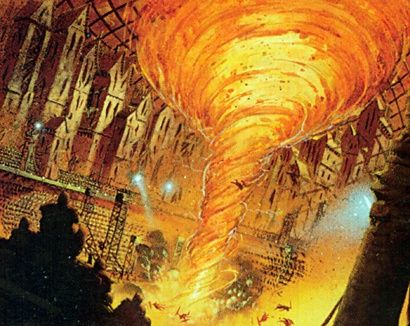
It’s been a few months since I’ve even considered looking for more than a few minutes at truly competitive gameplay. There’s been a lot going on, and I haven’t really taken the time to consider how that could be helpful to me. Things like constructing a deck in Magic and building efficiently in a RTS game are good structural exercises for my mind. Taking those skills into a competitive environment keep my attention sharp and teach me how to be a more gracious loser. Because I know I won’t always win. But that doesn’t mean I won’t try, dammit.
For the better part of a year, I haven’t seriously tackled the Magic: The Gathering format of Legacy. I was considering a few potential decks a while ago, but most of those plans fell by the wayside. After the release of the Modern Masters set, and some prompting from a friend, I’ve come back to the notion of putting a deck together to take with me to official events and the occasional Saturday night at my friendly local gaming store.
Legacy isn’t the only format out there, though. Between it and the ever-changing Standard is a format known as Modern. There are a few decks out there that have cards that span both formats. The one that appeals to me the most is called ‘Affinity’. I’ve liked artifacts for a long time, because they’re not dependant on colors and can get around a lot of obstacles if played correctly.
I tried putting together a list that didn’t subscribe to most common color combinations for the deck. However, a few suggestions and lists introduced me to [mtg_card]Tezzeret, Agent of Bolas[/mtg_card]. An ambitious and cunning artificer, Tezzeret has always been friendly to metal decks. As an agent of resident big bad dragon daddy Nicol Bolas, he’s slightly more insidious. The deck takes some of the basics of other Affinity decks in terms of creatures and mana sources, which gives me a few options.
[mtg_deck title=”Tezzeret’s Affinity”]
// Creatures
4 Arcbound Ravager
4 Ornithopter
4 Memnite
4 Vault Skirge
3 Etched Champion
3 Steel Overseer
// Spells
4 Thoughtcast
// Planeswalkers
4 Tezzeret, Agent of Bolas
// Artifacts
4 Chalice of the Void
4 Mox Opal
4 Cranial Plating
3 Springleaf Drum
// Lands
4 Vault of Whispers
4 Seat of the Synod
4 Ancient Tomb
3 Glimmervoid
// Sideboard
3 Oblivion Ring
3 Perish
3 Ethersworn Canonist
3 Whipflare
3 Tormod’s Crypt
[/mtg_deck]
The deck can push damage past defenders with the [mtg_card]Etched Champion[/mtg_card] or fly over them with [mtg_card]Ornithopter[/mtg_card] or [mtg_card]Vault Skirge[/mtg_card], any one of them benefiting from carrying [mtg_card]Cranial Plating[/mtg_card]. However, the deck also has a win condition that has nothing to do with creatures. Tezzeret can drop very early in the game, and his ultimate ability syncs well with artifact lands, 0-cost cards, and other low-cost options. Remember, X is twice the number of artifacts. So, if I have 5 artifacts in play, I gain 10 life and my opponent loses 10 life. That’s a 20-point swing, which can be difficult to overcome.
The deck is, of course, not invulnerable. It has no counter means save for Chalice of the Void, creatures can trample over the Champion no matter how much protection he has, and faster decks like burn can probably beat me to the punch or take wind out of my sails. Still, I think it has a lot of potential, and that potential doesn’t stop with Legacy. In Modern, the Chalice goes to the sideboard and illegal cards like Perish and Tormod’s Crypt have to go. Still, the play of the deck will be largely unchanged. I’m looking forward to putting it together and seeing how it plays.






